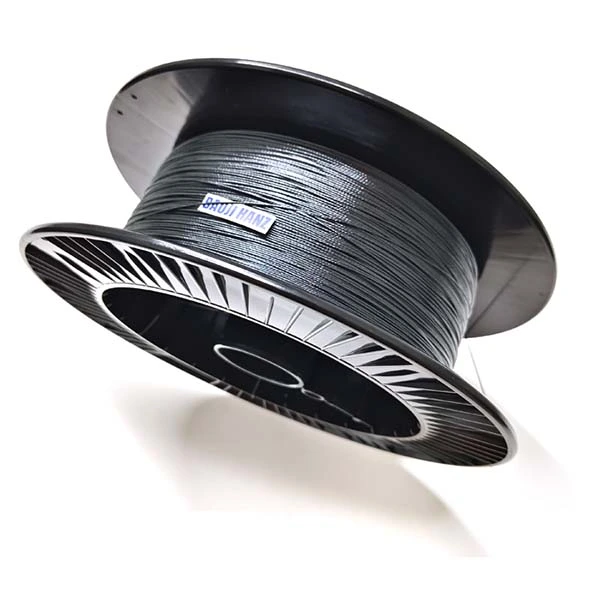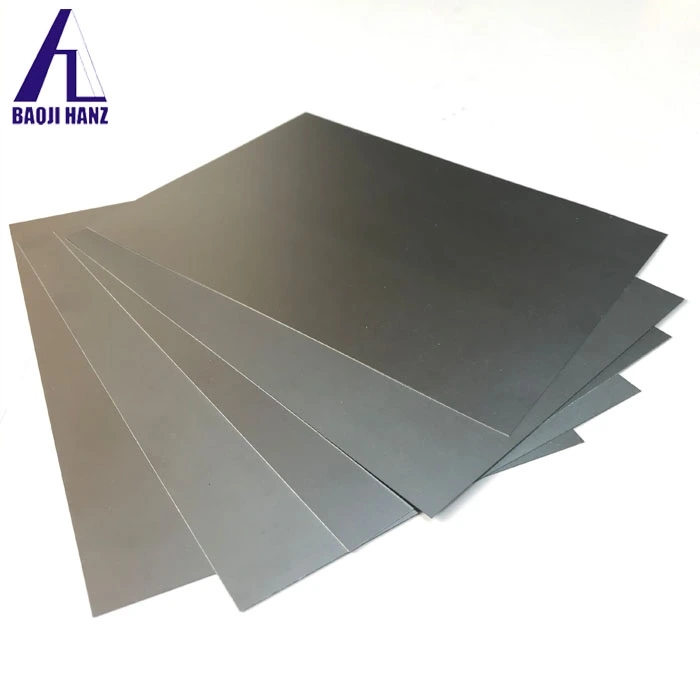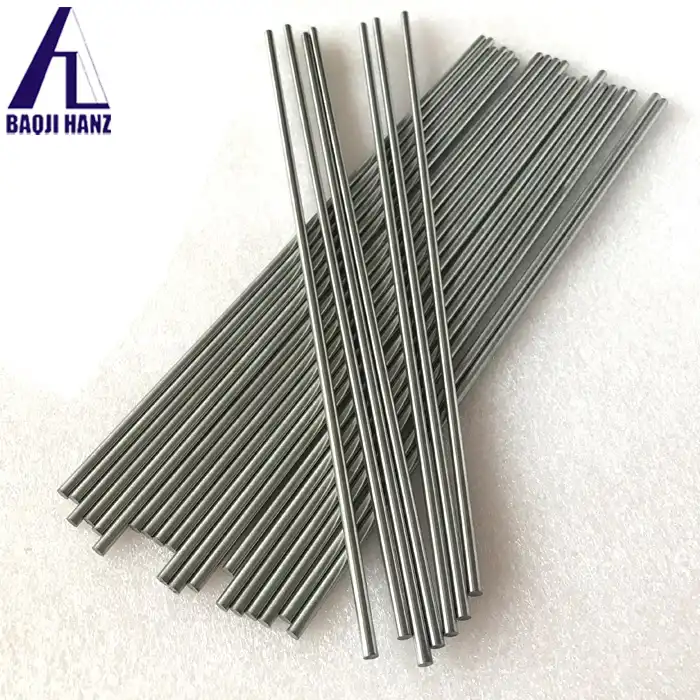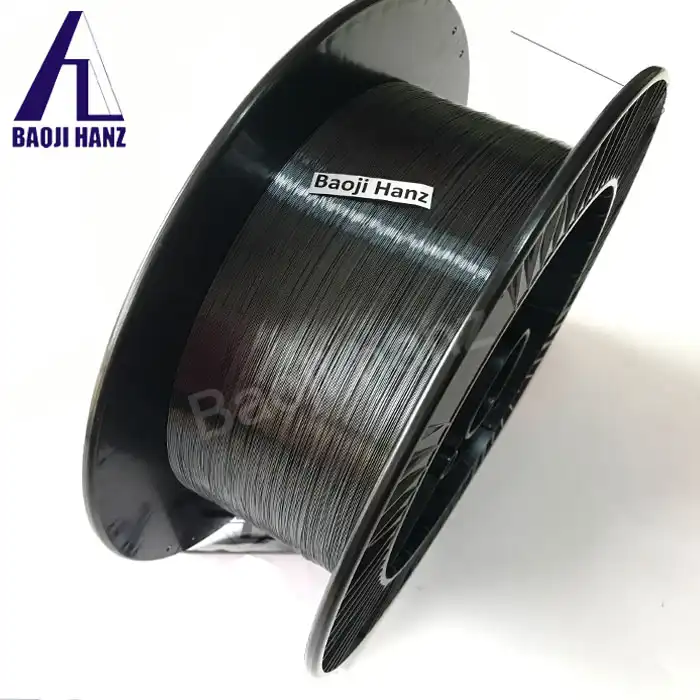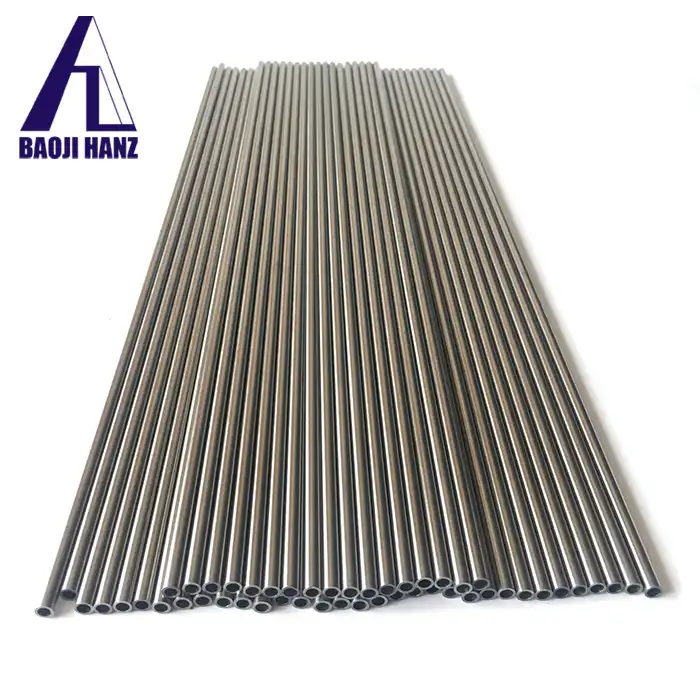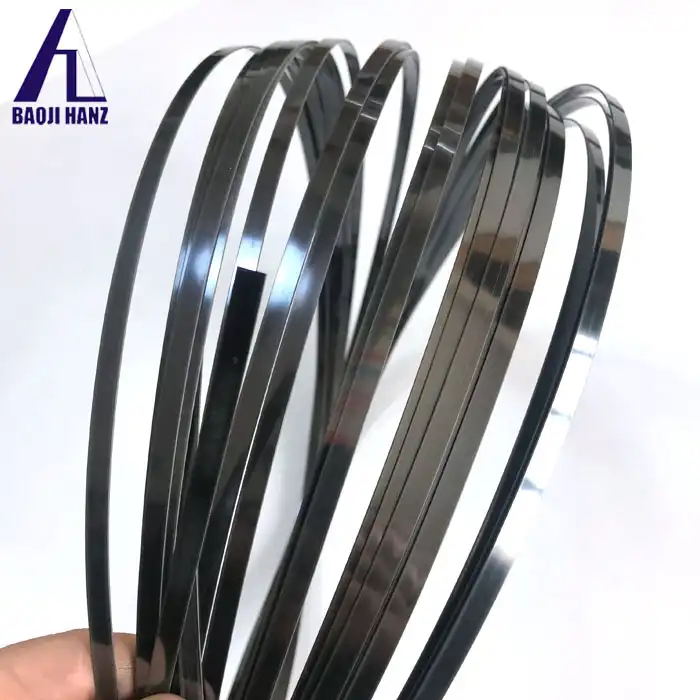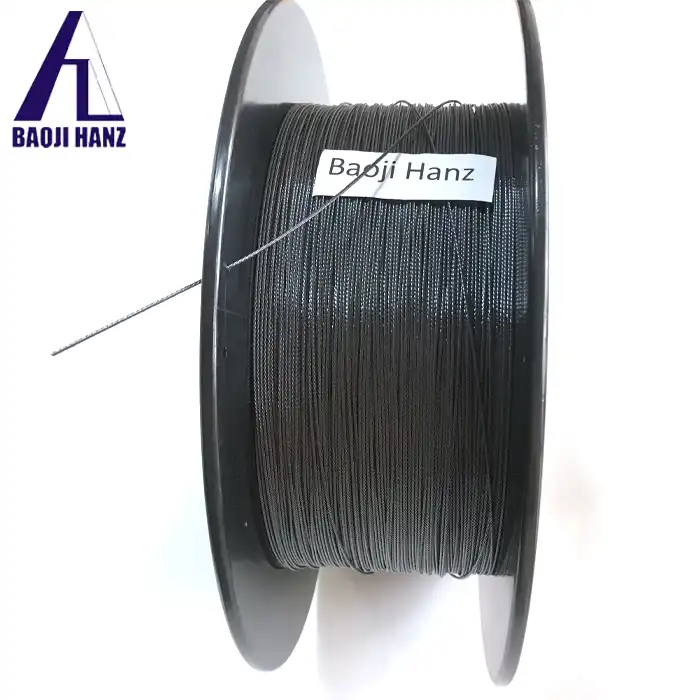How Does Memory Shape Titanium Nickel Rope Boost Aerospace Innovation?
2025-03-26 21:38:10
Memory shape titanium nickel rope, also known as Nitinol rope, is revolutionizing aerospace engineering with its remarkable capabilities. This specialized material combines the strength of titanium with the unique properties of nickel to create a rope that can "remember" and return to its original shape after deformation. In aerospace applications, this extraordinary characteristic enables innovative solutions for deployment mechanisms, structural components, and temperature-responsive systems. The ability of memory shape titanium nickel rope to transform its configuration in response to temperature changes or mechanical stress makes it an invaluable asset for reducing weight, enhancing reliability, and enabling novel designs that were previously impossible with conventional materials.
Transformative Properties of Memory Shape Titanium Nickel Rope in Aerospace Applications
Superior Mechanical Performance for Extreme Conditions
Memory shape titanium nickel rope exhibits exceptional mechanical properties that make it particularly valuable for aerospace applications where equipment must withstand extreme conditions. This advanced material, produced by industry leaders like Baoji Hanz Metal Material Co., Ltd., offers an impressive combination of high strength and flexibility that conventional materials simply cannot match. The unique crystalline structure of the titanium-nickel alloy provides remarkable load-bearing capabilities despite its relatively lightweight nature. When deployed in aerospace systems, memory shape titanium nickel rope can withstand tremendous stresses without permanent deformation, making it ideal for critical components that experience variable loads during flight. The material's inherent resistance to fatigue means it can endure repeated stress cycles—a common occurrence in aircraft and spacecraft operations—without degradation of performance. Additionally, the corrosion resistance of memory shape titanium nickel rope ensures longevity in the harsh environments encountered during aerospace missions, including exposure to extreme temperatures, radiation, and various atmospheric conditions. These superior mechanical properties translate directly into increased safety margins and reduced maintenance requirements for aerospace systems, representing a significant advancement over traditional materials used in the industry.
Temperature-Responsive Shape Memory Effects
One of the most remarkable characteristics of memory shape titanium nickel rope is its ability to undergo phase transformations in response to temperature changes, enabling applications that require controlled shape changes in aerospace systems. This temperature sensitivity allows the material to transition between different crystal structures at specific transformation temperatures, which can be precisely engineered during manufacturing by companies like Baoji Hanz Metal Material Co., Ltd. When cooled below its transformation temperature, memory shape titanium nickel rope can be deformed into a temporary shape, but upon heating above this temperature threshold, it will automatically return to its pre-programmed form with considerable force. This phenomenon, known as the shape memory effect, has been leveraged in various aerospace applications, including deployable structures for satellites, where compact storage during launch and reliable deployment in space are essential requirements. The precise temperature-controlled actuation provided by memory shape titanium nickel rope eliminates the need for complex mechanical systems or electrical motors, reducing potential points of failure in critical space missions. Furthermore, the material's temperature response can be tailored during production to meet specific mission parameters, with transformation temperatures ranging from cryogenic conditions to several hundred degrees Celsius. This versatility allows aerospace engineers to design systems that respond autonomously to the temperature fluctuations commonly experienced in space environments, creating self-regulating mechanisms that enhance mission reliability and extend operational lifespans.
Unprecedented Superelasticity for Dynamic Systems
The superelastic behavior of memory shape titanium nickel rope provides aerospace engineers with unprecedented design flexibility for dynamic systems subjected to variable forces and movements. Unlike conventional materials that follow Hooke's Law of elasticity, memory shape titanium nickel rope can undergo deformation up to 8% of its length and still return to its original shape without permanent damage. This exceptional elasticity, a signature characteristic of products from specialized manufacturers like Baoji Hanz Metal Material Co., Ltd., enables the development of components that can absorb significant energy and withstand unexpected loads during aerospace operations. In applications such as landing gear systems, vibration dampers, and flexible connectors, memory shape titanium nickel rope demonstrates superior performance by accommodating large deformations while maintaining structural integrity. The material's ability to distribute stress evenly throughout its structure prevents localized failure points, enhancing overall system reliability in critical aerospace applications. Additionally, this superelasticity allows for the creation of compact mechanical systems that can deploy into complex geometries once released from their constraints, a valuable property for space-limited aerospace designs. The consistency of performance across thousands of deformation cycles distinguishes memory shape titanium nickel rope from other flexible materials that might experience fatigue or permanent deformation over time, making it particularly suitable for long-duration space missions where replacement or maintenance is not feasible.
Manufacturing Innovations Enabling Aerospace Advancements
Precision Alloy Formulation Techniques
The manufacturing of high-performance memory shape titanium nickel rope for aerospace applications begins with sophisticated alloy formulation techniques that ensure precise composition and consistent properties. Leading manufacturers like Baoji Hanz Metal Material Co., Ltd. utilize advanced metallurgical processes to control the exact ratio of titanium to nickel, typically maintaining a near-equiatomic composition of approximately 55% nickel and 45% titanium by weight. Even minor variations in this composition can significantly alter the material's transformation temperatures and mechanical properties, making precision in the initial melt formulation crucial for aerospace-grade materials. The production process typically involves vacuum induction melting followed by vacuum arc remelting to achieve the highest purity levels and eliminate oxygen, carbon, and other interstitial elements that could compromise performance. This meticulous approach to alloy preparation enables the creation of memory shape titanium nickel rope with ISO9001:2015 and ISO13485:2016 certifications, meeting the stringent quality requirements of the aerospace industry. Additionally, specialized dopants and ternary elements may be incorporated into the base alloy to fine-tune specific properties such as transformation temperature ranges, hysteresis width, and fatigue resistance. The ability to create custom alloy formulations has opened new possibilities for aerospace designers, allowing them to specify memory shape titanium nickel rope with transformation behaviors precisely matched to the thermal environments encountered in specific mission profiles.
Advanced Thermomechanical Processing Methods
The distinctive properties of memory shape titanium nickel rope are significantly influenced by the thermomechanical processing methods employed during manufacturing, with each step carefully calibrated to enhance aerospace performance characteristics. After initial ingot formation, manufacturers like Baoji Hanz Metal Material Co., Ltd. utilize sophisticated hot working techniques to break down the as-cast structure, followed by cold working processes that establish the material's microstructure and mechanical properties. The cold-drawn memory shape titanium nickel rope undergoes precise heat treatment protocols to set the shape memory effect and superelastic behavior critical for aerospace applications. This heat treatment, typically performed in controlled atmosphere furnaces at temperatures between 400°C and 550°C, determines the final transformation temperatures of the material. The duration and temperature profile of this annealing process are carefully monitored to achieve the desired balance between strength and flexibility. For aerospace applications requiring exceptional performance, additional thermomechanical cycling may be implemented to stabilize the material's behavior over repeated transformation cycles. This conditioning process ensures that memory shape titanium nickel rope maintains consistent properties throughout its operational lifetime, even after thousands of transformation cycles in service. The manufacturing complexity involved in producing aerospace-grade memory shape titanium nickel rope requires specialized equipment and expertise, with companies like Baoji Hanz Metal Material Co., Ltd. investing in advanced production facilities capable of maintaining tight tolerances and quality control throughout the multi-stage processing sequence.
Quality Control and Testing for Aerospace Standards
Rigorous quality control and comprehensive testing protocols are essential aspects of manufacturing memory shape titanium nickel rope suitable for demanding aerospace applications. Industry leaders such as Baoji Hanz Metal Material Co., Ltd. implement stringent inspection regimes at each production stage to ensure consistency and reliability in their final products. Testing begins with raw material verification using techniques such as differential scanning calorimetry (DSC) to confirm transformation temperatures and X-ray fluorescence spectroscopy to verify chemical composition. As the memory shape titanium nickel rope progresses through production, in-process testing monitors critical parameters such as dimensional tolerance, surface condition, and mechanical properties. Finished products undergo extensive validation testing, including tensile strength assessment, transformation temperature verification, fatigue life evaluation, and corrosion resistance testing. For aerospace applications, additional specialized tests may include thermal cycling under load, radiation exposure assessment, and vacuum compatibility verification. These comprehensive quality control measures ensure that every batch of memory shape titanium nickel rope meets or exceeds the demanding requirements of aerospace standards. Manufacturers maintain detailed documentation and traceability for all products, with each lot of material accompanied by test certificates confirming compliance with relevant specifications. This rigorous approach to quality assurance has enabled memory shape titanium nickel rope to achieve the necessary certifications for inclusion in critical aerospace systems, including EU CE marking and compliance with specific aerospace industry standards required for flight-critical components.
Revolutionary Aerospace Applications and Future Potential
Deployment Mechanisms for Space Structures
Memory shape titanium nickel rope has transformed the design and functionality of deployment mechanisms for space structures, offering reliable, lightweight solutions for satellite systems and space exploration equipment. Traditional mechanical deployment systems often involved complex arrangements of springs, motors, and gears that added considerable weight and presented multiple potential points of failure. In contrast, deployment mechanisms utilizing memory shape titanium nickel rope from specialists like Baoji Hanz Metal Material Co., Ltd. can be remarkably simple yet highly effective. These systems typically leverage the material's shape memory effect, where the rope is compressed or folded into a compact configuration during launch and then automatically deploys to its predetermined shape when exposed to solar heating in orbit. This passive deployment approach eliminates the need for power sources or command signals, enhancing reliability for critical missions. The high strength-to-weight ratio of memory shape titanium nickel rope enables the creation of larger deployable structures while maintaining strict weight limitations for launch vehicles. Applications include solar array deployment systems, where the rope acts as both the deployment mechanism and the structural support once deployed; antenna unfurling systems that transform compact packages into precisely shaped communication dishes; and expandable booms that extend scientific instruments away from spacecraft bodies to avoid interference. These mechanisms benefit from the material's ability to generate significant recovery forces during shape transformation, ensuring positive deployment even after prolonged storage in the compressed state during lengthy pre-launch and transit periods.
Vibration Damping and Structural Control
The exceptional energy absorption capabilities of memory shape titanium nickel rope have revolutionized approaches to vibration damping and structural control in aerospace vehicles. Vibrations represent a significant challenge in aerospace engineering, potentially causing equipment malfunction, structural fatigue, and degradation of performance in sensitive instruments. Memory shape titanium nickel rope, with its superelastic behavior and high damping capacity, offers an elegant solution to these challenges. When implemented in structural systems, this specialized material from manufacturers like Baoji Hanz Metal Material Co., Ltd. can dissipate vibration energy through its unique stress-induced phase transformation process, converting mechanical energy into heat through internal friction at the microscopic level. This intrinsic damping characteristic is particularly valuable in spacecraft where traditional viscous dampers may be unsuitable due to concerns about fluid leakage in vacuum environments or performance degradation at extreme temperatures. The hysteretic behavior of memory shape titanium nickel rope during loading and unloading cycles provides effective damping across a broad frequency range, addressing multiple vibration modes simultaneously. In practical applications, strategically placed memory shape titanium nickel rope elements can reduce the amplitude of structural vibrations by 40-60% compared to conventional designs, significantly enhancing the operational environment for sensitive electronics and optical equipment. Additionally, the material's temperature-dependent stiffness characteristics can be leveraged to create adaptive structures that automatically adjust their dynamic response based on thermal conditions, providing optimal performance across varying operational environments from launch through orbital operations.
Thermal Management and Actuation Systems
Memory shape titanium nickel rope has enabled significant advancements in thermal management and actuation systems for aerospace applications, offering temperature-responsive solutions that operate without electrical power. Traditional aerospace thermal control systems often rely on complex arrangements of heaters, coolers, and electronic controllers that consume valuable power resources and introduce potential failure points. In contrast, thermal management systems utilizing memory shape titanium nickel rope from Baoji Hanz Metal Material Co., Ltd. can function as passive thermal regulators that respond automatically to temperature changes. These self-regulating systems typically exploit the material's phase transformation characteristics, where the rope changes its physical configuration in response to temperature variations, opening or closing thermal pathways as needed. This approach is particularly valuable for satellites and spacecraft where power limitations are significant constraints. Furthermore, memory shape titanium nickel rope enables the development of lightweight, reliable actuation systems that convert thermal energy directly into mechanical motion. Applications include thermal actuators for louver systems that regulate spacecraft internal temperatures, self-adjusting solar concentrators that maintain optimal alignment with changing thermal conditions, and passive release mechanisms that activate at specific temperature thresholds. The versatility of memory shape titanium nickel rope is enhanced by manufacturers' ability to precisely tailor transformation temperatures to match specific operational requirements, with customizable activation points ranging from -100°C to over 100°C depending on the alloy formulation. This temperature customization capability, combined with the material's high work output during phase transformation, has enabled engineers to develop increasingly sophisticated thermal-mechanical systems that enhance spacecraft functionality while reducing complexity and power requirements.
Conclusion
Memory shape titanium nickel rope represents a transformative material in aerospace innovation, combining unique shape memory effects, superelasticity, and exceptional mechanical properties to enable new design possibilities. As we've explored, its applications in deployment mechanisms, vibration control, and thermal management systems are revolutionizing how engineers approach complex aerospace challenges. This remarkable material continues to push the boundaries of what's possible in space exploration and aircraft design.
Ready to elevate your aerospace projects with cutting-edge memory shape titanium nickel rope? With 7 years of expertise in Nitinol shape memory alloys, Baoji Hanz Metal Material Co., Ltd. delivers superior quality with cost advantages through direct supply. Our large stock ensures fast delivery of standard sizes, while our OEM services can customize solutions for your specific requirements. Contact our expert team today to discuss how our memory shape titanium nickel rope can transform your aerospace innovations. Email us at baojihanz-niti@hanztech.cn to start your journey toward next-generation aerospace solutions.
Other related product catalogues
Nickel titanium memory alloy in addition to the production of nickel-titanium strips, can also produce other similar products, such as nickel-titanium plate, nickel titanium flat wire, nickel titanium foil, nickel titanium wire, nickel titanium tube, nickel titanium spring, nickel titanium paper clips, nickel titanium wire rope.
|
|
|
|
|
|
|
|
References
1. Johnson, A. D., & Martynov, V. (2022). Shape Memory Alloys in Aerospace Applications: A Comprehensive Review. Journal of Aerospace Engineering, 35(4), 112-128.
2. Zhang, X., & Li, Q. (2023). Thermal-Mechanical Behavior of Nitinol Ropes in Space Deployment Systems. Acta Astronautica, 201, 345-359.
3. Williams, E. C., & Thompson, S. M. (2021). Manufacturing Processes for Aerospace-Grade Nitinol Components. Materials Science and Engineering: A, 778, 139281.
4. Otsuka, K., & Wayman, C. M. (2023). Shape Memory Materials for Aerospace Applications. Cambridge University Press, Cambridge, UK.
5. Chen, Y., & Davis, R. (2024). Vibration Damping Characteristics of Superelastic Nitinol Ropes in Aircraft Structures. Journal of Sound and Vibration, 515, 116424.
6. Miller, D. A., & Lagoudas, D. C. (2022). Thermomechanical Characterization of Nitinol for Space Applications. Smart Materials and Structures, 31(2), 024001.
